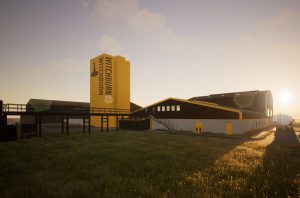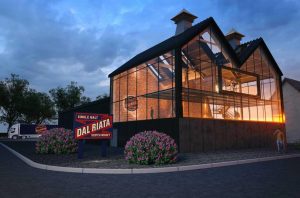The names of Scotland’s whisky regions trip easily off the tongue of most spirits fans – there’s Speyside, there’s Islay, there’s Highland, there’s Lowland… and then there’s a pause, before connoisseurs remember the name ‘Campbeltown’. Soon however, Scotland’s forgotten whisky region will be back at the forefront of fans’ minds.
Nestled above the Mull of Kintyre on the west coast, Campbeltown is undergoing a whisky revival. Over the next few years, the number of distilleries is poised to double to six, with the existing trio of Springbank, Glen Scotia and Kilkerran-maker Glengyle being joined by three new kids on the block.
Wind the clock back to the early 19th century and Campbeltown boasted more than 30 distilleries and enjoyed a reputation as the whisky capital of the world. Competition from sites above the Highland line slowly eroded the town’s prowess after the 1823 Excise Act expanded Scotch production, while the advent of blending with grain whisky in the 1860s changed the face of the industry dramatically.
Only Springbank was left by 1985, but its owner – the Mitchell family – revived Glengyle at the turn of the millennium, with Glen Scotia having reopened in 1989. Rather than resurrecting closed sites, the latest trio are starting from scratch, riding the new wave of Scotch whisky distilleries that have opened since 2009, when gin maker Sipsmith fought to change the law on minimum still sizes.
Sparking a whisky renaissance
But why now – and why Campbeltown? ‘There’s a push and a pull – Islay is just about full, while Campbeltown now has a whisky festival that’s really starting to buzz,’ explained Gareth Roberts, co-founder of Organic Architects, designers of Witchburn, one of the three new sites.
Roberts also pointed to support from local authority Argyll & Bute Council and economic development agency Highlands & Islands Enterprise (HIE), which appear keen to help Campbeltown emerge from the shadow of Islay, the famous whisky-making island that lies to its north-west. ‘I enquired about an old council site in Campbeltown for another client, and the next day I had a council official, a planning officer and someone from HIE all on a Zoom call,’ he remembered.
‘You just don’t get that kind of engagement and enthusiasm if you want to build another distillery in Speyside or the Highlands. People realise that whisky can bring jobs and visitors back to Campbeltown.’
Witchburn: the big beast

While many of Scotland’s new wave distilleries are boutique affairs, Witchburn will sit on a different scale. Capable of producing two million litres of alcohol a year, with room to expand to four million litres, the distillery will run all day and all night, so it can reuse heat and energy.
Witchburn aims to be a net-zero distillery by sourcing all its power from renewable sources and recovering and reusing heat, with production expected to begin late next year. It’s being built at the former RAF Machrihanish air base near Campbeltown, which had a massive runway long enough to land Nasa’s space shuttle.
‘There were so many factors that attracted us to Campbeltown – the history of the area, the space, the resources,’ said Paul Dempsey, sales director in the connoisseurs’ department at Glasgow-based whisky bottler Brave New Spirits, which is opening Witchburn. ‘The local community has been fantastic and so supportive.’
Machrihanish: from farm to bottle

Nearby Machrihanish distillery will be at the other end of the scale, adopting a farm-to-bottle production process. Yet the farm distillery – which is being built by R&B Distillers, the company behind Isle of Raasay distillery off Skye – shares Witchburn’s commitment to net zero and renewable energy.
If all goes to plan, Alasdair Day – R&B’s co-founder and Master Distiller – hopes to be distilling in 2025. Its capacity will sit at around 500,000 litres a year, about two-and-a-half times larger than Raasay.
‘Part of the attraction was that Campbeltown was the Victorian capital of Scotch whisky, and the success of Springbank and Glen Scotia,’ said Day. ‘Having the space to buy the farm for the distillery was important too. The community support has been a big benefit of being on Raasay, and we think that could be the same in Campbeltown.’
Dál Riata: a still room with a view

Plans for Dál Riata Distillery, unveiled last year by bottler North Star Spirits, are also awaiting council approval. Dál Riata will sit on Campbeltown’s seafront, promising stunning views and producing 850,000 litres each year.
All three distilleries expect to echo Campbeltown’s traditional ‘maritime’ salty flavour and oily texture. Witchburn is planning a mix of peated and unpeated whiskies, emulating the mix among the town’s existing distilleries. With Scotland aiming for net zero by 2045 and the wider UK by 2050, Roberts expects more developers to be attracted to Campbeltown, thanks to its wind farms.
‘In 10 years, I can imagine Campbeltown being a focal point for a fun group of distillers,’ he added. ‘They’re going to be making their own community and having a right laugh.’







